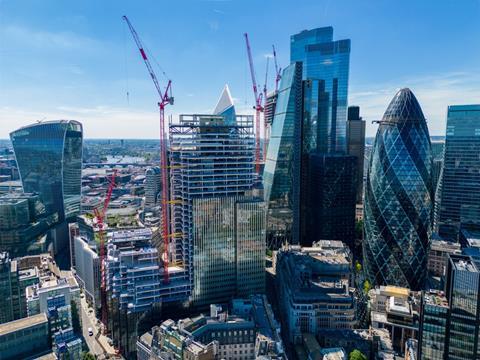Total income of biggest contractors and housebuilders increased by average of 18% last year, Building’s annual table reveals
Total turnover at the country’s Top 150 contractors and housebuilders rose by an average 18% last year as the industry bounced back from the squeeze on income caused by the covid-19 pandemic.
Building’s annual survey of the country’s largest builders, the results of which are published in full tomorrow, shows the 10 biggest collectively saw their turnover rise by close to 14% in 2021 - despite a fall in revenue at the two biggest contractors, Balfour Beatty and Kier.
In a trading update last week, Balfour Beatty said turnover this year would be around £8.7bn. Kier is due to publish a trading update next month ahead of its interim results in March.

Housebuilders saw revenues rebound from the squeeze on income caused by the lockdowns of 2020 with Taylor Wimpey seeing revenue rise by more than half, while income at Vistry, the new owner of Countryside, was up by a third and L&G-owned Cala Homes saw turnover jump by 85%.
Contractors enjoyed less spectacular growth but some firms in the top 20, such as ISG, Bam and Mace, all saw double-digit rises during the period.
But, with a recession looming, many will be watching how the quoted contractors have performed this year when the spring results season kicks off next year when Morgan Sindall announces its annual results in February.
Because of different reporting requirements, quoted contractors are seen as more of a reliable bellwether on how the wider industry is performing than their private peers where the lag between financial year-ends and accounts being filed at Companies House can stretch into months.
In a warning of what might come in the next few weeks, Top 150 member T Clarke told investors last month that revenue for this year would be off by just under 10% of its budgeted workload to around £410m after the quoted M&E specialist said £40m of business had been “reprogrammed” by clients into next year.
Recent figures from the Office for National Statistics showed construction output was up again in October, the fourth successive rise.
But last week, the latest S&P Global/CIPS UK Construction PMI report said market confidence was at its lowest since May 2020 when the country was a few weeks into the first of the covid-19 lockdowns, adding that the amount of positive sentiment in the industry was at its lowest since December 2008 – when the industry was in the grip of the financial crisis.
Brendan Sharkey, head of construction and real estate at accountant MHA, warned: “Firms have a steady pipeline of work going into 2023 because many projects were pushed backed this year. However, whilst the short-term outlook is reasonable, the further one peers ahead the grimmer it looks. No one feels very confident about the back end of 2023.”
But brokers, who cover quoted firms, have welcomed chancellor Jeremey Hunt’s autumn statement last month with its commitment to HS2 and Sizewell C and said it will be a lifeline to many.
Top 150 Contractors and Housebuilders 2022

Don’t miss Building’s Top 150 Contractors and Housebuilders out tomorrow
>>Sortable tables allowing you to track and compare turnover and pre-tax profit
>>See firms’ extent of activity in contracting, housing, property and services
>>Full in-depth analysis of the latest trends in the industry from Building’s Deputy Editor Dave Rogers
In a briefing document, Liberum said: “We still see the public sector as a good place to be. The autumn statement leaves the strong outlook for UK infrastructure intact, with a reiteration of the commitment to spend £600bn over five years. Infrastructure is key to growing he economy and levelling up.”
And in its assessment, equity research firm Progressive added: “The autumn statement was, in our view, broadly positive for construction in general and countered a number of sector concerns.”
Visiting Laing O’Rourke’s HS2 station scheme at Solihull last month, Hunt admitted: “We could have balanced the books with big cuts to capital projects but better transport connections spread wealth and opportunity.”




























No comments yet